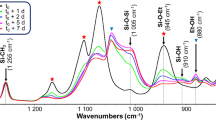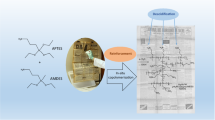Abstract
N-chloropolyacrylamide (N-Cl-PAM) obtained from the N-chlorination of the Hofmann reaction of polyacrylamide is easily transferred to the amino group, even with a reaction temperature as low as 0 °C. In this study we investigated how the N-chlorination of polyacrylamide with a low reaction temperature, under low alkaline conditions to avoid the N-chloroamide group forming the amino group (Hofmann reaction), obtained high conversions of the reactive N-chloroamide group. N-Cl-PAM is a highly reactive polymer that easily promotes paper strength. It reacts with the cellulose’s hydroxyl and carboxyl groups to form covalent bonds establishing a strong bond between agents and fibers. The established networks of the strengthening agents increase the quantity and quality of the hydrogen bond structures, and therefore the molecule bonding arrangement. It has better properties than anionic and cationic wet end additives for the improvement of paper strength.
Similar content being viewed by others
Reference
H. K. Lee, Taiwan TAPPI, 1, 23 (1995).
M. Higuchi, I. Sakata and R. Senju, Kogyo Kagaku Zasshi, 73, 421(1970).
H. Tanaka and R. Senju, Kobunshi Ronbunshu, 33, 309 (1976).
The Statistics of Taiwan Paper Industry, Taiwan Paper Industry Association, p. 6, 1996.
L. V. Forman, TAPPI, 33, 444 (1950).
H. Tanaka, Japan TAPPI, 48, 16 (1994).
H. Taka, in “Jikken Kagaku Koza 15” Marruzen, p. 190 (1991).
D. A. Skoog, D. M. West and F. J. Holler, Foundamentals of Analytical Chemistry, 5th ed., p. 779, 1988.
H. Suzuki, Japan Kyushu University Doctor dissertation, p. 22, 1986.
H. Terayama, J. Polym. Sci., 8, 243 (1951).
R. Senju, Koroido Tekitei Ho, Nankodo (1969).
F. Onabe, Application of the colloid titration technique in wet end chemistry, International Symposium on Wood and Pulp Chemistry, Vol. 3, p. 133 (1983).
H. L. Heiss, Ind. Eng. Chem., 8, 16 (1959).
R. A. Parham, Ultrastructure and Chemistry, Pulp and Paper Manufacture, 3rd ed., vol. 1, p. 35, 1983.
H. Yamashita, Crosslinking by the isocyanate, Cross-linking Agent Handbook, Daisheisha, 1981.
J. C. Paulson, TAPPI, 41, 665 (1958).
F. Kraft, Pulp and Paper Manufacture, 2nd ed., McGraw-Hill, p. 647, 1969.
Author information
Authors and Affiliations
Rights and permissions
About this article
Cite this article
Lee, HK., Jong, WL. Synthesis and applications of polyacrylamide derivatives in the wet end of papermaking (Part II. Reactive N-chloropolyacrylamide). J Polym Res 4, 119–128 (1997). https://doi.org/10.1007/s10965-006-0015-1
Issue Date:
DOI: https://doi.org/10.1007/s10965-006-0015-1




